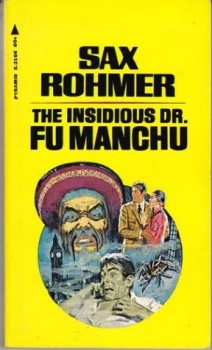The Public Life of Sherlock Holmes: A Century of John D. MacDonald
 It’s no surprise, given the title of this column, that I’ve written more Sherlock Holmes-related posts than about any other topic. What is surprising to me, given that I know myself fairly well, is that I’ve only done one post about John D. MacDonald. You can read some stuff I’ve written about him over on my own blog, Almost Holmes, here and here and here. But perhaps because I haven’t been able to delve deeply enough into re-reading and analysis, I’ve not come back to him at Black Gate. Until today.
It’s no surprise, given the title of this column, that I’ve written more Sherlock Holmes-related posts than about any other topic. What is surprising to me, given that I know myself fairly well, is that I’ve only done one post about John D. MacDonald. You can read some stuff I’ve written about him over on my own blog, Almost Holmes, here and here and here. But perhaps because I haven’t been able to delve deeply enough into re-reading and analysis, I’ve not come back to him at Black Gate. Until today.
Yesterday marked the one hundredth anniversary of John MacD’s birth. When MacDonald died in December of 1986 of heart-related problems, he was one of the most influential and popular authors in America. Thirty years later, while he is still respected and cited by many writers, including John Jakes, Randy Wayne White and others, he’s somewhat forgotten. Which is both sad, and something that I would like to ponder on for a future post as well.
A quote from Stephen King:
“John D. MacDonald has written a novel called The End of the Night which I would argue is one of the greatest American novels of the twentieth century. It ranks with Death of a Salesman, it ranks with An American Tragedy,”
A quote from me, Bob Byrne (I admit, I don’t quite have the cachet of that King fellow):
“John D. MacDonald is one of the greatest writers of the twentieth century: In any genre. He was a skillful storyteller and a first-rate social commentator.”













 Many, many years ago I worked at a used bookstore called Bookmans in Tucson. Everybody from Arizona knows Bookmans. They have several stores around the state and they’re all as big as supermarkets, filled with used books, music, and games. Most books are half cover price, and employees got a 50% discount. Sometimes the manager would be like, “You did a good job today, Sean, take a book.”
Many, many years ago I worked at a used bookstore called Bookmans in Tucson. Everybody from Arizona knows Bookmans. They have several stores around the state and they’re all as big as supermarkets, filled with used books, music, and games. Most books are half cover price, and employees got a 50% discount. Sometimes the manager would be like, “You did a good job today, Sean, take a book.”